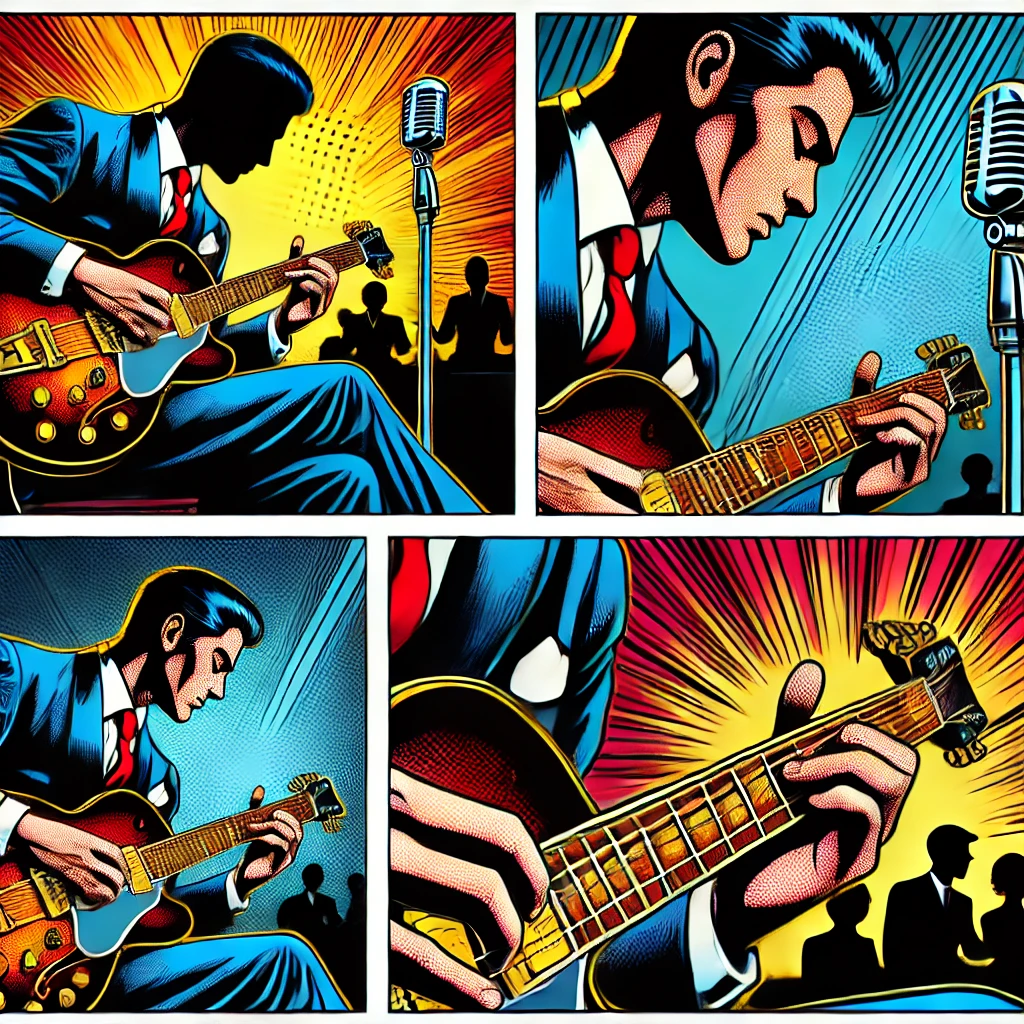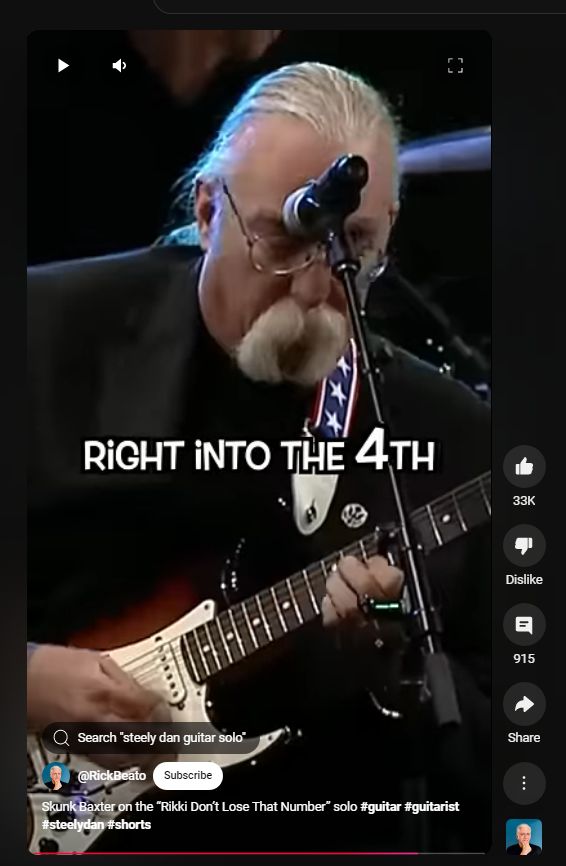Rikki Dont Lose That Number Solo Explained Rick Beato Skunk Baxter
Jeff “Skunk” Baxter’s guitar solo on Steely Dan’s “Rikki Don’t Lose That Number” is a prime example of his sophisticated yet tasteful approach to lead guitar, blending jazz, rock, and blues influences. Let’s break down the music theory behind his solo:
1. Key and Scale Choices
- The song is in B Major (B, C#, D#, E, F#, G#, A#), which is a relatively bright key.
- Baxter’s solo primarily mixes major and minor pentatonic scales, a common blues and jazz approach.
- B Major Pentatonic (B, C#, D#, F#, G#) – a smooth and melodic choice.
- B Minor Pentatonic (B, D, E, F#, A) – adds bluesy tension and contrast.
- B Mixolydian Mode (B, C#, D#, E, F#, G#, A) – common in rock, this mode keeps the major scale structure but flattens the 7th (A instead of A#), adding a bluesy rock edge.
2. Melodic Phrasing
- Call and Response: Baxter’s phrasing often follows a question-and-answer style, playing a short melodic idea and then responding to it with a slight variation or embellishment.
- Slurs, Bends, and Vibrato: His expressive playing includes:
- Slides (gliding between notes for a smooth jazz feel)
- String bends (pushing the pitch up for emotional tension)
- Vibrato (small pitch oscillations that add sustain and richness)
3. Jazz Influence
- Baxter was heavily influenced by jazz harmony, and this is evident in his note choices.
- He often outlines the chord changes rather than sticking strictly to one scale.
- Chromatic passing tones (non-diatonic notes that connect scale tones smoothly) appear, which is a jazz technique.
- His soloing often targets chord tones (especially 3rds and 7ths), reinforcing the harmony.
4. Rhythmic Playfulness
- Baxter doesn’t just play straight eighth or sixteenth notes. Instead, he:
- Uses syncopation, placing accents on unexpected beats.
- Delays resolutions, letting notes hang in the air before resolving them melodically.
- Alternates between fluid legato lines and percussive picking, giving the solo a dynamic, breathing quality.
5. Chord-Tone Targeting & Arpeggios
- Instead of just running up and down scales, he targets important chord tones:
- Over a G#m7 chord (relative minor), he might emphasize B and D#, which define the chord.
- Over an E Major chord, he could target G# (the major 3rd) or B (the 5th).
- He occasionally outlines arpeggios rather than just scale runs, a hallmark of jazz and country-inspired rock.
6. The Smooth Transition Back to the Song
- Baxter resolves his final phrase smoothly back into the song’s chord progression, ensuring the solo feels integrated rather than detached.
- He often lands on the root or 5th of the chord, making the transition seamless.
Conclusion: Why It Works
- Mix of major/minor pentatonics creates a soulful blues feel.
- Jazz phrasing and chromaticism add sophistication.
- Rhythmic variation and articulation give the solo an organic, expressive quality.
- Chord-tone targeting makes it sound connected to the song rather than just a scale exercise.
Baxter’s solo is a perfect balance of melody, technique, and taste, showing why he’s one of the most respected session guitarists of his time.

Visited 4 times, 1 visit(s) today
